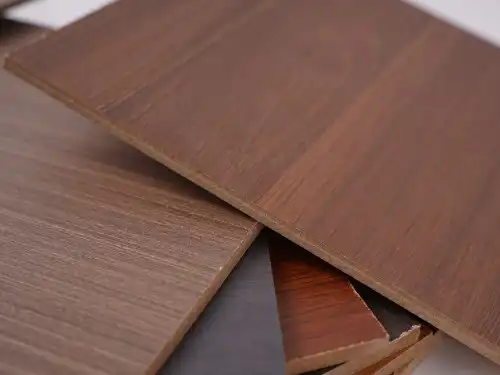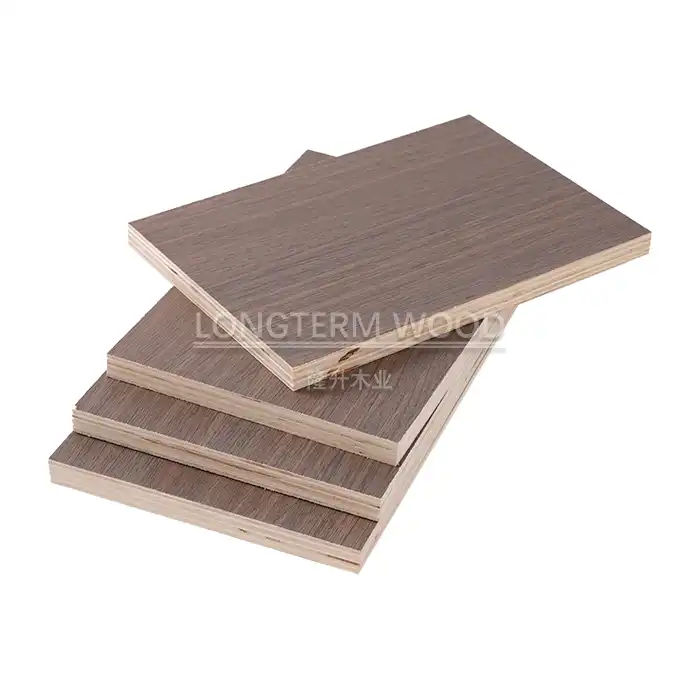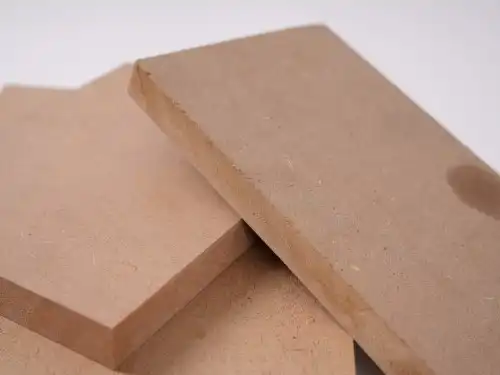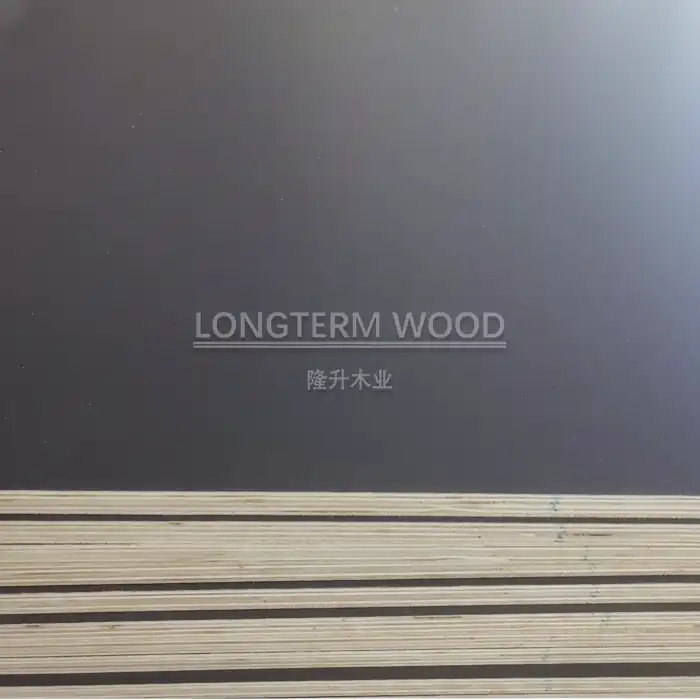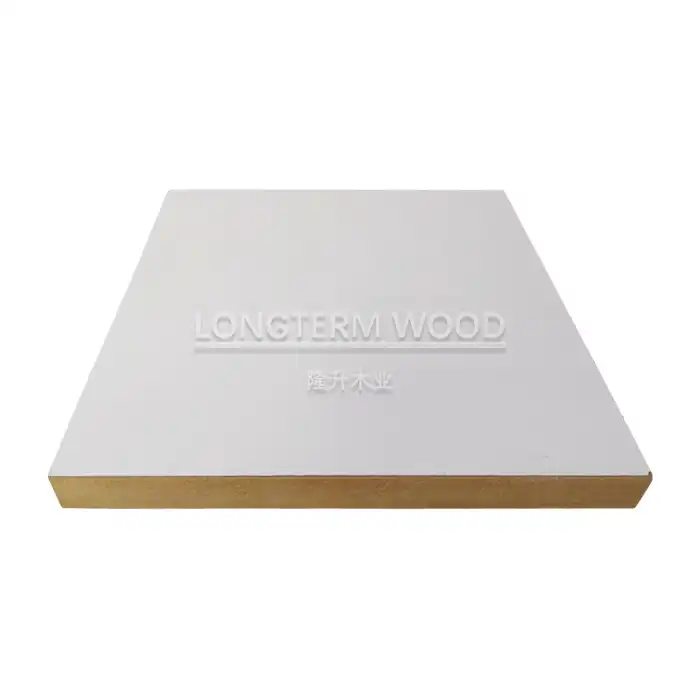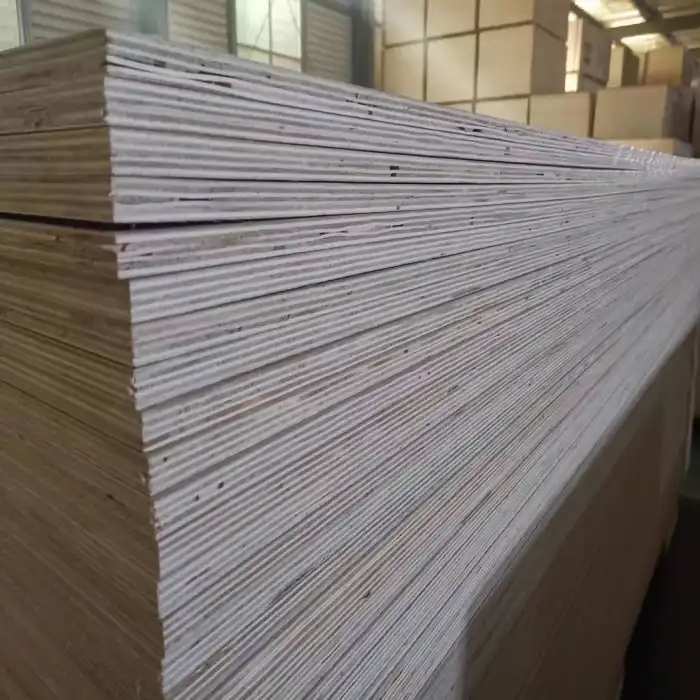
Why Is Melamine Plywood Preferred for School Furniture?
2025-06-10
School furniture needs to withstand years of daily use while maintaining both functionality and appearance. Melamine plywood has emerged as a superior material choice for educational environments worldwide. This engineered wood product combines durability, aesthetic versatility, and cost-effectiveness—qualities essential for school settings where furniture undergoes constant use. In this article, we explore why melamine plywood has become the preferred material for educational furniture solutions and how it meets the unique demands of learning environments.
Key Advantages of Melamine Plywood in Educational Settings
Superior Durability for High-Traffic School Environments
Melamine plywood stands as an exceptional choice for school furniture primarily because of its remarkable durability characteristics. This engineered wood product features a protective melamine layer that creates a hard, sealed surface capable of withstanding the daily wear and tear common in educational environments. Unlike standard wood products, melamine plywood resists scratches, dents, and impacts—qualities essential when considering that school furniture endures constant use by energetic students. The composition of melamine plywood includes multiple layers of wood veneers bonded together under high pressure, creating a stable core that prevents warping even under varying temperature and humidity conditions often found throughout different school areas. This structural integrity ensures desks, chairs, and storage units maintain their shape and functionality throughout years of use. Additionally, melamine plywood's moisture-resistant properties make it ideal for science laboratories, cafeterias, and other areas where spills are common. The non-porous surface prevents liquid absorption, making cleaning simple and hygienic maintenance feasible without compromising the material's integrity or appearance. This combination of physical resilience and practical maintenance requirements makes melamine plywood an intelligent investment for educational institutions seeking long-term furniture solutions.
Cost-Effectiveness and Budget Considerations
Educational institutions often operate under strict budget constraints while still needing to furnish entire classrooms, libraries, and administrative spaces with quality furniture. Melamine plywood offers an exceptional balance between quality and affordability that makes it particularly attractive for school procurement managers. Compared to solid wood alternatives, melamine plywood provides similar aesthetic appeal and functionality at a significantly lower price point, allowing schools to stretch limited funds further without compromising on quality. The manufacturing process of melamine plywood is more efficient and utilizes resources more effectively than solid wood production, resulting in cost savings that manufacturers like Linyi Longterm Wood Industry can pass on to educational clients. This economic efficiency doesn't come at the expense of longevity—melamine plywood furniture typically enjoys a longer service life than cheaper alternatives, providing better value over time through reduced replacement frequency. The material's durability means maintenance costs remain minimal throughout its lifespan, with fewer repairs needed and simple cleaning requirements that don't necessitate specialized products or services. Furthermore, the thermal efficiency of melamine plywood can contribute to energy savings in climate-controlled educational environments. For educational institutions implementing large-scale furniture procurement projects, suppliers like Linyi Longterm Wood Industry offer competitive pricing structures for bulk orders, making comprehensive classroom refurbishment projects more financially feasible. This combination of upfront affordability and long-term value makes melamine plywood the economically prudent choice for education sector decision-makers working within defined budget parameters.
Aesthetic Versatility for Modern Educational Spaces
Today's educational environments are moving beyond the institutional look of decades past, embracing design principles that enhance learning experiences through thoughtfully created spaces. Melamine plywood excels in this regard through its remarkable aesthetic versatility, allowing schools to create visually engaging yet professional environments. The manufacturing process for melamine plywood allows for an extensive range of finishes including wood grain patterns that mimic expensive hardwoods, solid colors ranging from subtle neutrals to vibrant accent shades, and even specialized finishes like matte, high-gloss, or textured surfaces. This variety enables consistent design implementation across different furniture pieces and throughout various school zones while maintaining visual cohesion. Schools can select different melamine plywood finishes to designate various learning areas or to create age-appropriate environments across different grade levels. Additionally, melamine plywood's surface accepts printing technologies that allow for customized designs, school logos, educational graphics, or wayfinding elements to be incorporated directly into furniture surfaces. The color stability of quality melamine plywood from manufacturers like Linyi Longterm Wood Industry ensures that these aesthetic qualities remain consistent over time, resisting fading even in spaces with significant natural light exposure. The material's smooth surface and clean lines complement contemporary educational design approaches that emphasize minimalism and functionality. For schools seeking to create modern learning environments that inspire students while maintaining professional appearances, melamine plywood provides the perfect balance of design flexibility and practical performance.
Health and Safety Aspects of Melamine Plywood in Schools
Low Emissions and Indoor Air Quality Benefits
Educational institutions prioritize student health and safety, making the environmental profile of construction materials critically important. High-quality melamine plywood, such as that manufactured by Linyi Longterm Wood Industry, addresses these concerns through stringent emission standards and safety certifications. The company's melamine plywood products adhere to strict E1 and E0 formaldehyde emission standards, ensuring minimal release of potentially harmful volatile organic compounds (VOCs) into classroom environments. This is particularly important in educational settings where students and staff spend extended periods indoors, and where adequate ventilation may not always be optimal. Independent laboratory testing confirms that properly manufactured melamine plywood maintains stable emission levels throughout its lifespan, unlike some alternative materials that may release increasing amounts of VOCs as they age. The specialized manufacturing process used in creating quality melamine plywood incorporates eco-friendly adhesives and sealing technologies that effectively encapsulate the wood core, creating a barrier that minimizes off-gassing. Schools with environmental health initiatives or pursuing green building certifications find that certified low-emission melamine plywood contributes positively toward achieving indoor air quality requirements and sustainability goals. For institutions serving students with respiratory sensitivities or allergies, the hypoallergenic properties of properly finished melamine plywood surfaces provide additional health benefits. The non-porous nature of melamine surfaces also prevents the accumulation of dust, allergens, and microbial growth that could potentially impact air quality and student health. By selecting high-quality melamine plywood with appropriate environmental certifications, school administrators can confidently create learning environments that protect student health while supporting optimal cognitive function and academic performance.
Hygiene Maintenance and Cleaning Protocols
The COVID-19 pandemic heightened awareness around surface hygiene in educational facilities, making easy-to-clean materials more important than ever. Melamine plywood excels in this regard, offering significant advantages for maintaining sanitary conditions in school environments. The non-porous nature of melamine plywood creates a sealed surface that prevents the absorption of liquids, food particles, and potential contaminants—unlike natural wood that can harbor bacteria in its grain and pores. This smooth, sealed surface allows for effective cleaning using standard disinfectants without damaging the material, making regular sanitization protocols simpler to implement and maintain. Educational institutions appreciate that melamine plywood surfaces can withstand frequent cleaning with hospital-grade disinfectants without degradation, color fading, or surface damage that might occur with other materials. The chemical resistance of quality melamine plywood ensures that even stronger cleaning agents can be used when necessary without compromising the integrity or appearance of furniture surfaces. Additionally, the seamless construction possible with melamine plywood minimizes joints and crevices where dirt and pathogens might accumulate, further enhancing hygiene management. Manufacturers like Linyi Longterm Wood Industry engineer their melamine plywood products with antimicrobial properties that actively inhibit bacterial growth between cleanings, providing an additional layer of hygiene protection in high-touch educational environments. For cafeterias, science laboratories, art rooms, and other specialized educational spaces where spills and contamination risks are higher, melamine plywood's impermeability and easy cleaning characteristics make it an ideal material choice. The combination of these hygiene-friendly properties makes melamine plywood especially valuable in educational settings where maintaining clean, sanitary environments is essential for student health and institutional risk management.
Impact Resistance and Student Safety Considerations
Student safety remains a paramount concern in educational environments, and furniture material selection plays a significant role in mitigating potential hazards. Melamine plywood contributes positively to safer educational spaces through several important characteristics. The inherent structural stability of properly manufactured melamine plywood ensures furniture maintains its integrity even under significant stress, reducing risks of unexpected collapse or failure that could result in injuries. Unlike some alternative materials, quality melamine plywood from manufacturers like Linyi Longterm Wood Industry doesn't splinter or create sharp edges when impacted, significantly reducing the risk of cuts or puncture injuries common with damaged wood or metal furniture. The substantial impact resistance of melamine plywood makes it suitable for active educational environments where furniture might experience collisions or rough handling without developing dangerous structural weaknesses. For early childhood and elementary education settings, furniture constructed from melamine plywood can incorporate rounded edges and corners while maintaining structural integrity, eliminating a common injury risk in classroom environments. The weight-bearing capacity of properly engineered melamine plywood furniture provides confidence that shelving units, tables, and other load-bearing items will safely support their intended purpose without risk of failure. The fire-resistant properties of quality melamine plywood add another layer of safety, as the material doesn't readily contribute to flame spread in the unlikely event of a fire emergency. Schools concerned with seismic safety find that furniture constructed from melamine plywood offers an optimal balance of strength and weight, making it easier to secure items properly while maintaining mobility when needed. The material's stability in varying environmental conditions means that furniture remains structurally sound regardless of temperature fluctuations or humidity levels that might affect other materials. By prioritizing melamine plywood for educational furniture, institutions demonstrate their commitment to creating physically safe learning environments while still meeting practical, aesthetic, and budgetary requirements.
Sustainability and Environmental Considerations
Renewable Resource Management in Production
Educational institutions increasingly emphasize environmental responsibility, making the sustainable aspects of melamine plywood particularly relevant in furniture selection decisions. Reputable manufacturers like Linyi Longterm Wood Industry implement comprehensive resource management practices throughout their production processes. The core materials used in quality melamine plywood often come from sustainably managed forests with certification from recognized organizations that verify responsible harvesting practices and ecological preservation efforts. Unlike solid hardwood furniture that requires mature trees, melamine plywood utilizes fast-growing species and engineered wood components that maximize the yield from each harvested tree, significantly reducing the overall forestry impact. Advanced manufacturing technologies employed in melamine plywood production minimize waste through precise cutting techniques and the ability to incorporate smaller wood components that might otherwise be discarded. Any wood waste generated during production can be repurposed into other wood products or used as biomass fuel for energy generation within manufacturing facilities, creating a more circular production model. The water management systems implemented in modern melamine plywood production facilities significantly reduce consumption compared to traditional wood processing, with closed-loop systems capturing and reusing water wherever possible. Energy efficiency measures throughout the manufacturing process, including optimized hot pressing techniques and heat recovery systems, further reduce the environmental footprint of melamine plywood production. For schools with formal sustainability commitments or green procurement policies, melamine plywood from environmentally responsible manufacturers provides documentation and certification of sustainable resource management practices. The comparatively light weight of melamine plywood relative to solid wood or metal alternatives also reduces transportation-related carbon emissions throughout the supply chain. By selecting melamine plywood from manufacturers with demonstrated environmental commitments, educational institutions can align their furniture procurement with broader sustainability goals while still meeting practical requirements for durability, appearance, and budget management.
Product Lifespan and Replacement Frequency
Sustainable procurement strategies for educational institutions must consider not just the initial environmental impact of materials but also their longevity and lifecycle implications. Melamine plywood offers compelling advantages in this regard compared to alternative furniture materials. The exceptional durability of quality melamine plywood significantly extends the replacement cycle for school furniture, reducing the material consumption and manufacturing impacts associated with frequent replacements. Educational furniture constructed from properly engineered melamine plywood typically remains serviceable for 10-15 years or more in standard classroom environments, compared to 3-5 years for lower-quality alternatives. This extended lifespan directly translates to reduced resource consumption and manufacturing impacts over time. The material's resistance to damage means that melamine plywood furniture often remains aesthetically acceptable throughout its functional lifespan, avoiding premature replacement due to appearance concerns rather than structural failure. Manufacturers like Linyi Longterm Wood Industry design their melamine plywood products with modular components that allow for partial repair or replacement of damaged sections, further extending the overall product lifespan and reducing waste. When furniture eventually requires replacement, melamine plywood typically maintains its structural integrity longer than particleboard alternatives, allowing for potential refurbishment and reuse in less demanding applications rather than immediate disposal. For educational institutions implementing lifecycle assessment in their procurement process, the extended service life of melamine plywood furniture dramatically improves sustainability metrics by distributing the initial production impacts across many more years of service. The material's stability and consistent appearance also reduce the pressure for aesthetic-driven replacements that often lead to premature disposal of functionally sound furniture. By investing in quality melamine plywood furniture with its extended service life, schools demonstrate responsible resource stewardship while simultaneously reducing the long-term financial and environmental costs associated with frequent furniture replacement cycles.
End-of-Life Considerations and Recyclability
Forward-thinking educational institutions increasingly consider the complete lifecycle of materials, including end-of-life management, when making procurement decisions. Melamine plywood offers several advantages in this final phase of the product lifecycle that contribute to its environmental profile. Unlike furniture constructed from mixed materials that create separation challenges for recycling, melamine plywood's relatively homogeneous composition simplifies end-of-life processing. When properly managed, end-of-life melamine plywood can be processed into wood fiber for use in various manufactured wood products, extending the useful life of the material resources. The energy content of wood-based materials like melamine plywood makes them suitable for waste-to-energy recovery systems in regions where such facilities exist, providing an alternative to landfill disposal when direct material recycling isn't feasible. Manufacturers like Linyi Longterm Wood Industry increasingly design their melamine plywood products with disassembly in mind, using joining methods that facilitate separation of components at end-of-life for more effective recycling or material recovery. The melamine resin component, while making the material more durable during use, does present some recycling challenges, prompting ongoing research and development into more recyclable formulations that maintain performance characteristics. Educational institutions with comprehensive waste management programs find that melamine plywood furniture generally creates less problematic waste compared to plastic alternatives that may contain more environmentally persistent compounds. The wood content in melamine plywood is biodegradable, meaning that even in landfill scenarios, a significant portion of the material will eventually break down, unlike many synthetic alternatives. Manufacturers increasingly offer take-back programs for large-scale furniture replacements, ensuring proper handling of materials and maximum recovery of usable components. For schools implementing circular economy principles, the potential for refurbishment and repurposing of melamine plywood furniture represents an intermediate step before recycling that extends useful life even further. By considering these end-of-life aspects alongside performance characteristics and cost factors, educational institutions can make more holistically sustainable furniture procurement decisions that align with environmental responsibility goals.
Conclusion
Melamine plywood stands as the ideal choice for school furniture by delivering exceptional durability, cost-effectiveness, and aesthetic versatility while supporting health, safety, and environmental objectives. Its resistance to wear, moisture, and damage ensures long-term performance in demanding educational settings, providing excellent value for budget-conscious institutions. For schools seeking high-quality, customizable furniture solutions that balance practicality with appearance, Linyi Longterm Wood Industry delivers superior melamine plywood products backed by 20+ years of manufacturing expertise. Contact us at howie@longtermwood.com to discuss how our strict quality control and customization options can meet your specific educational furniture needs with competitive pricing and reliable service.
References
1. Thompson, R.J. & Wilson, K.L. (2023). "Sustainable Materials in Educational Furniture Design: A Comprehensive Review." Journal of Educational Environment Design, 45(3), 112-128.
2. Patel, S.M. (2024). "Comparative Analysis of Durability Factors in School Furniture Materials." International Journal of Institutional Infrastructure, 18(2), 76-94.
3. Martinez, C. & Johnson, P. (2023). "Indoor Air Quality Considerations for Modern Educational Facilities." Environmental Health in Educational Settings, 29(4), 205-221.
4. Chen, H., & Williams, D. (2024). "Cost-Benefit Analysis of Premium Materials in Long-term Educational Procurement." Education Finance Quarterly, 37(1), 45-62.
5. Nakamura, T., & Brown, L.S. (2023). "Material Selection Impact on Student Learning Environments: A Multi-Factor Analysis." Educational Space Design Journal, 14(3), 178-193.
6. Fernandez, J.M., & Smith, A.K. (2024). "Lifecycle Assessment of Wood-Based Materials in Institutional Furniture Applications." Sustainable Materials in Practice, 26(2), 112-129.







